
22nd Annual Ha-Ha is in the Books
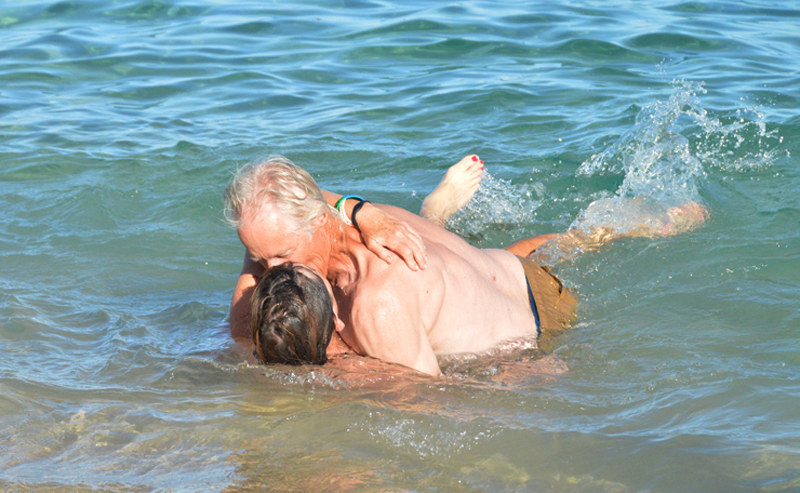
©Latitude 38 Media, LLC
All that’s left of the 22nd annual Baja Ha-Ha cruisers’ rally from San Diego to Cabo San Lucas, with stops at Turtle Bay and Bahia Santa Maria, are the memories. But for the 424 sailors who finished the 750-mile course aboard 109 boats, what tremendous memories they are.
As the Grand Poobah for the 21st time, yours truly was told repeatedly what a “life transforming” experience it had been. Countless participants insisted they would be back for more in a future Ha-Ha.
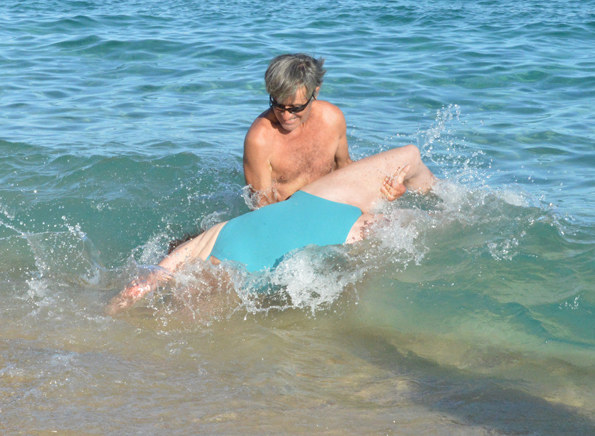
©Latitude 38 Media, LLC
This edition of the Ha-Ha featured not only some of the warmest temperatures ever right out of San Diego, but some of the best sailing conditions. Even for the more ‘cruisy’ boats, there was great sailing on every leg. And on the third leg in particular, some boats had more wind than they needed, with gusts into the low 30s. This resulted in best-ever speeds for a number of boats, including Tom Wurfl and Helen Downs’ San Diego-based Lagoon 42 catamaran Catatude, which hit 16.7 knots — under main alone.
The wind was consistent enough throughout the event for five skippers to achieve ‘Soul Sailor’ status for having sailed the entire way. They were Wurfl of Catatude, Mark Hall of the Stockton-based Colvin 34 schooner Del Viento, Jim Brainard of the Oxnard-based J/35 Brainwaves, Johnathan Mote of the Corona del Mar-based Jeanneau 42 Serendipity, and Patsy ‘La Reina del Mar’ Verhoeven of the La Paz-based Gulfstar 50 Talion, who sailed all the way for the ninth year in a row.
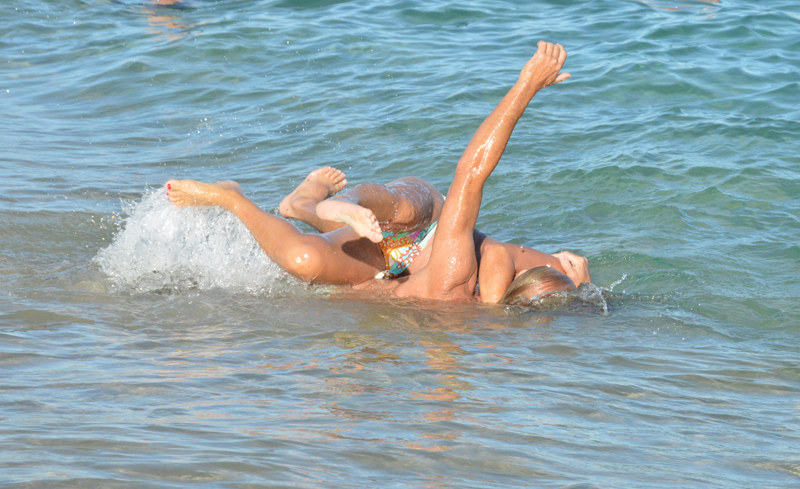
©Latitude 38 Media, LLC
The last two events of the Ha-Ha were the Beach Party on Friday, featuring the lip-smacking, sand-in-the-orifices From Here to Eternity Kissing Contest, and Saturday night’s award’s ceremony at the beautiful parking lot of the IGY Marina Cabo San Lucas.
The winner of the new top award, the Spirit of Philo Hayward Award, was presented to Tom Carr, the 74-year-old skipper of the diminutive Mirror 19 sloop Bluebird. The very experienced skipper, who was given special dispensation for his boat, which is eight feet below the normal minimum length, not only handled the strong winds and big seas with aplomb, but he embodied the giving spirit of the late Philo Hayward, a Ha-Ha vet from 2000 whose bar and music studio in La Cruz became not only a major cruiser hangout, but a true Mexican-American community center that hosted many charities.

©2015Latitude 38 Media, LLC
Carr delayed his start of Leg Two from Turtle Bay because a fellow Ha-Ha crew had gotten their anchor line snagged on something 35 feet below the surface. Tom stripped down to his tighty whities, pulled out a hookah device from somewhere in the tiny boat, and dove in. Tom, of course, was just one of many sailors who were happy to help others during the trip, be it with a tow, the loan of a battery, a mechanical fix — or a little lovin’.
Singlehanding is not permitted on the Ha-Ha so Tom did have crew. This was Nguyen Vuong, who had never sailed before. At the Awards Ceremony she told the audience that she’d been terrified at times, but after a suitable time to recover from this experience, she’d be ready to sail offshore again.
There were perhaps 20 participants who had sailed very little or not at all prior to the start of this year’s Ha-Ha. Skipper after skipper told us how surprised they were at how quickly their first-time watch-standers caught on.
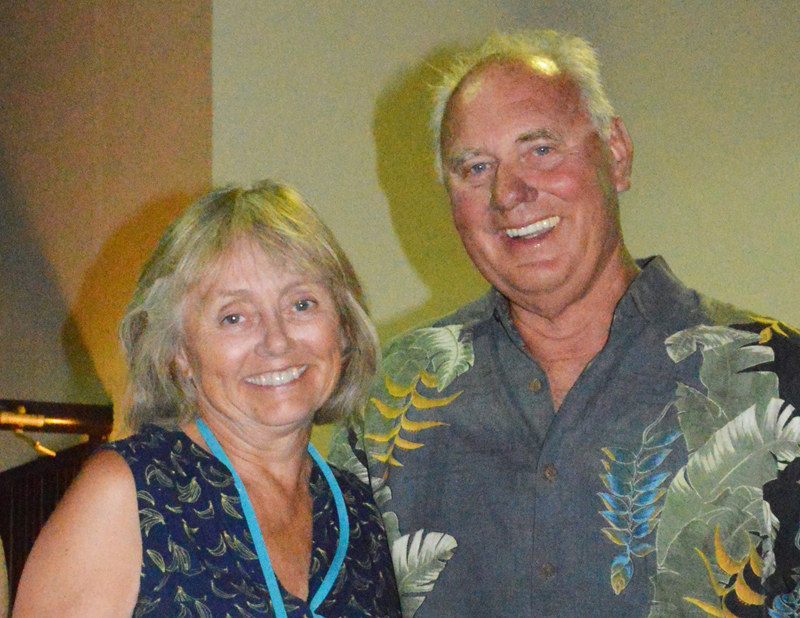
©2015Latitude 38 Media, LLC
What’s so great about the Ha-Ha? First of all, it’s the antithesis of sitting on the couch and waiting to die. The Ha-Ha is two weeks of living life to the hilt, 1,440 minutes a day. There is great sailing under spinnakers, challenging jibes, landing big fish, sunsets, moonrises, screaming down waves, rocking at anchor, big cities, isolated anchorages, live bands, dolphins, whales, and all in all big adventure. Life is not about things like cars and houses, it’s about experiences, and the Ha-Ha crams as many experiences into two weeks as is possible.
Second, it’s the terrific people who make the Ha-Ha so great. By and large, sailors are an intelligent, adventurous, responsible lot, just the kind you want to bond with during experiences, be they out on the ocean, at a beach party, or on the dance floor at Squid Roe acting like children. Lord knows nobody wants to cruise in a 100+ boat group for long, but two weeks is just about perfect.
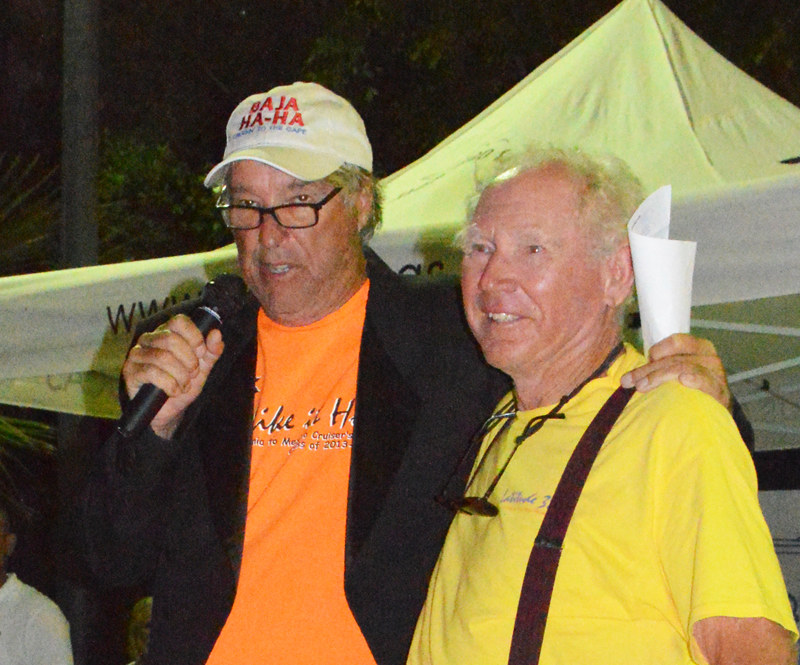
©Latitude 38 Media, LLC
Third, except for Internet connections at Turtle Bay and Bahia Santa Maria, Ha-Ha participants were disconnected from the phony world of electronic devices and instead lived in the real world of nature. And it turns out that the real world of nature isn’t so bad after all.
The Poobah is often asked how many more years he will lead the Ha-Ha from aboard the mothership Profligate. We’re going to do it as long as we have crew as great as the 12 we had this year, as long as we have such great participants, and as long as we physically can. Except for some gimp knees this year, we were in pretty good shape, so we hope to Ha-Ha for years to come. And we hope you’ll join us, because in our heart of hearts, we think you’ll really enjoy it.
Memories of Merlin
We were on the Baja Ha-Ha when we read in ‘Lectronic that Bill Lee had bought Merlin, the ultralight sled that he’d designed and built in 1977, and that he had trucked back to Santa Cruz with an eye to doing the 2017 Transpac.
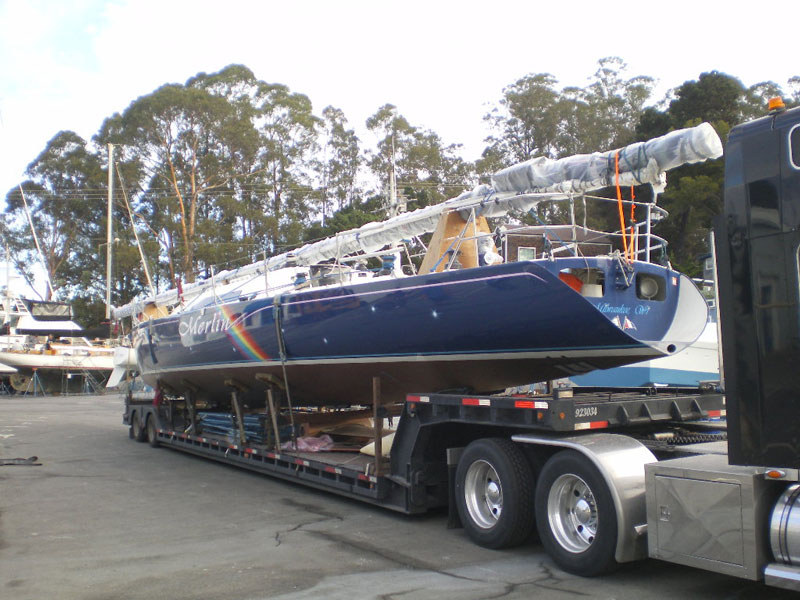
In addition to smashing the Transpac elapsed time record in 1977, Merlin was the ultralight boat that dramatically influenced yacht design around the world for years to come.
Thanks to circumnavigator Jim Leach of Sausalito, we had a short item on the February 24, 1977, launch of Merlin in the very first issue of Latitude 38.
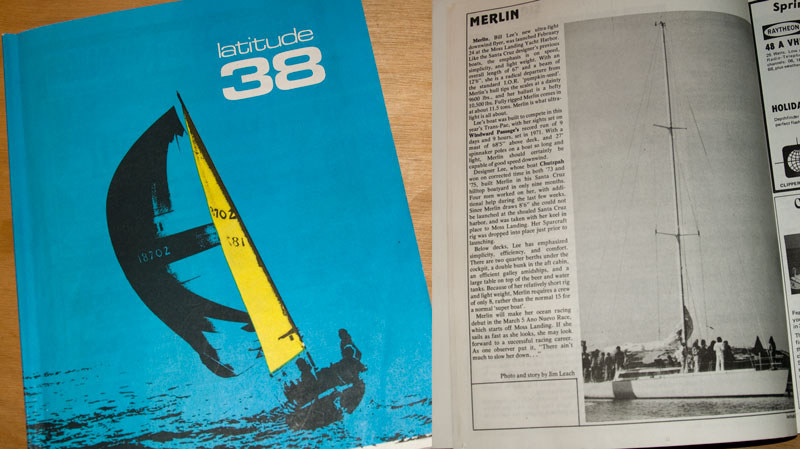
©Latitude 38 Media, LLC
The second issue of Latitude featured coverage of the first-ever Singlehanded Farallones Race, which many experienced sailors thought was the height of reckless irresponsibility. The biggest entry in that event was Bill Lee’s as-yet-untried 67-footer. Lee told the organizers that he would only enter if somebody came aboard at the end of the race and helped him take down the sails.
That first Singlehanded Farallones started near Alcatraz and finished halfway down the Oakland Estuary. Race day was one of those where it was calm inside the Bay and blowing like stink out in the ocean. As we recall, Bill put a double reef in the main and flew a #4 jib. Merlin was still overpowered.
There was chaos out in the ocean, as there was a dismasting, a flipped multihull, and maybe a sinking or two. Frankly, we were a little concerned for everyone in the fleet, as everybody was new to singlehanding at the time.
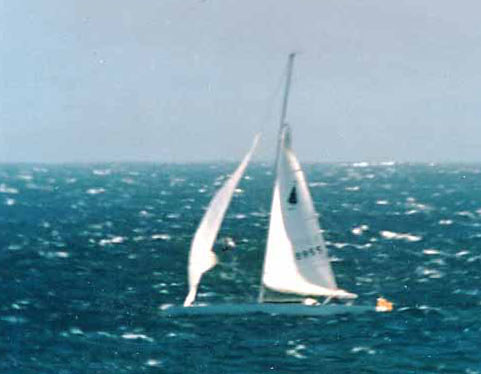
We were hard at work on another 18-hour day on the second issue of Latitude when we got a call at about 4 p.m. from Survival and Safety, the outfit that then sponsored the Singlehanded Farallones Race. Merlin was passing Alcatraz, we were told, so we’d better get our ass down to the Estuary. You see, we had agreed to be the one to help Bill drop the sails after the finish.
The wind was very light in the Estuary, so dropping the sails on Merlin was easy. After we got the big sled tied up, Bill had us come down to the nav station so we could figure out his average speed from the Farallones to the Bay.
Taking out his dividers, Bill looked at us and said, “Let’s see, 60 miles to every degree of latitude, right?”
Not only were we relatively novice sailors at the time, we hadn’t sailed much in the ocean, and thus didn’t have a clue how many miles there were to a degree of latitude. Bill could have told us there were three miles to a degree and we would have agreed with him. So we just put a dumb look on our face and mumbled something unintelligible. It wasn’t hard for us to do.
Bill kind of smiled and got to work with the dividers. As we recall, he calculated that he’d made it back from the Farallones averaging 14 knots. We thought that was pretty good, but were too ignorant to know how great it really was.
Thanks to Bill’s ‘everybody is welcome to sail on Merlin‘ philosophy, she was not just a great record-setting sled, she became the mothership of a movement in sailing. A movement where everybody, not just just yacht club members, was encouraged to sail. Everybody included women, who were given positions of responsibility and time at the wheel. Few boats have ever created so many great memories for so many people.
Even though our favorite Merlin Memory made us look like the sailing ignoramus we were at the time, it’s still our favorite. How about you? We’d love to hear your favorite Merlin Memory.
And a tip of the Latitude hat to you, Bill. Your bringing Merlin back really put a smile on our face.
Days of Future Passed
These days, historical milestones seem to pop up every few weeks on the evening news. Recent ones include the 77th anniversary of Orson Welles’ War of the Worlds broadcast and the 25th anniversary of Back to the Future II, in which media pundits pondered how accurate — or mostly inaccurate — its predictions were. Bay sailing had a few historical milestones of its own in 2015. Check them out:
100 years ago
The 1915 Pan Pacific Exposition opened in February and ran through December. Created in part to celebrate the opening of the Panama Canal, and in part to celebrate the City’s recovery from the great earthquake of 1906, the massive international fair occupied 635 acres of prime waterfront stretching from Van Ness to the Presidio. Among the wonders and demonstrations were a telephone line to New York City, the actual Liberty Bell (on its last trip away from Philadelphia), the first airplanes flying overhead (which many people had never seen), and sailboat races out of what would become the San Francisco Marina. Sailboats also appeared on many of the commemorative coins created for the Expo. An exhibit on the Pan Pacific Expo at the de Young Museum in San Francisco continues through January 10, 2016.
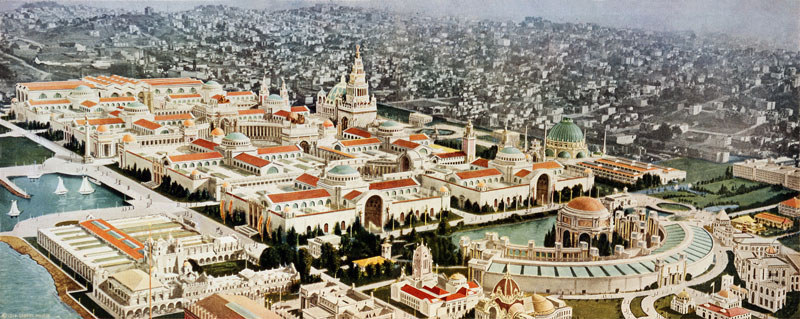
75 years ago
Another International Fair, this one held on 400 acres of the newly-created Treasure Island, once again drew millions of people from near and far to the Bay Area. The Golden Gate International Exposition of 1939-40 was originally planned to celebrate the Bay’s two newest bridges, the Golden Gate and Bay Bridge. But once plans got underway, it became more of a Pacific Rim celebration — and had the added benefit of employing thousands of people during the Great Depression. At this one, you could actually get a ride in an airplane. (The long-term plan for TI was to make it into San Francisco’s main airport. Thankfully, the Navy took it over when the war started.) Sailboat races and demonstrations were held in present-day Clipper Cove.
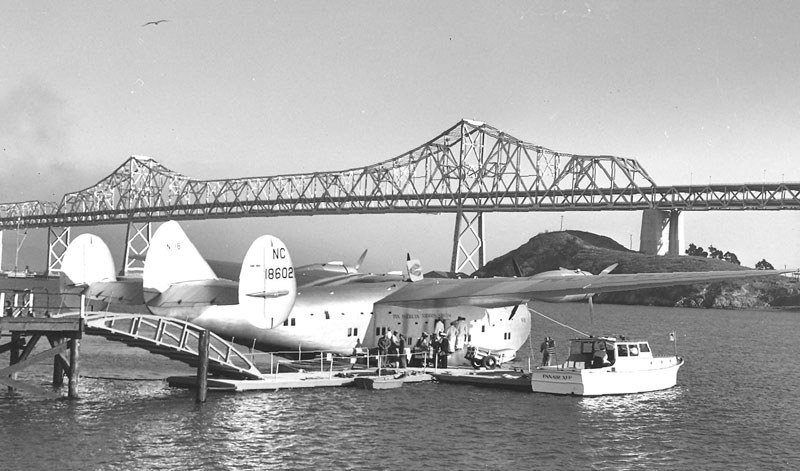
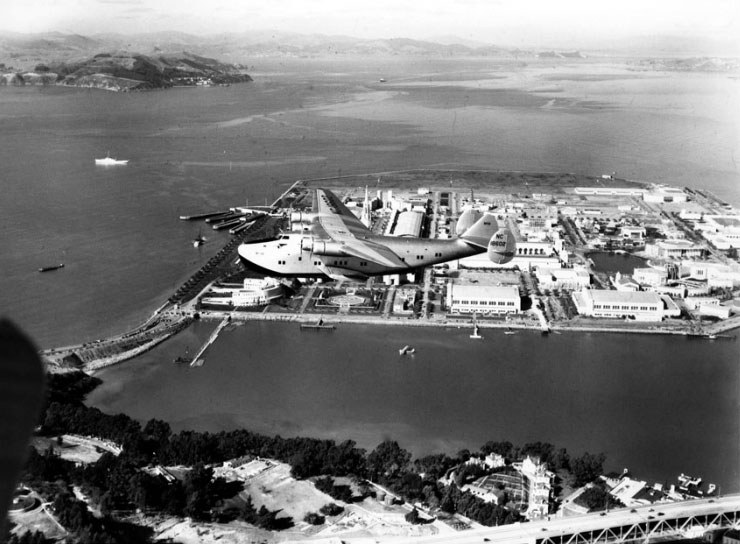
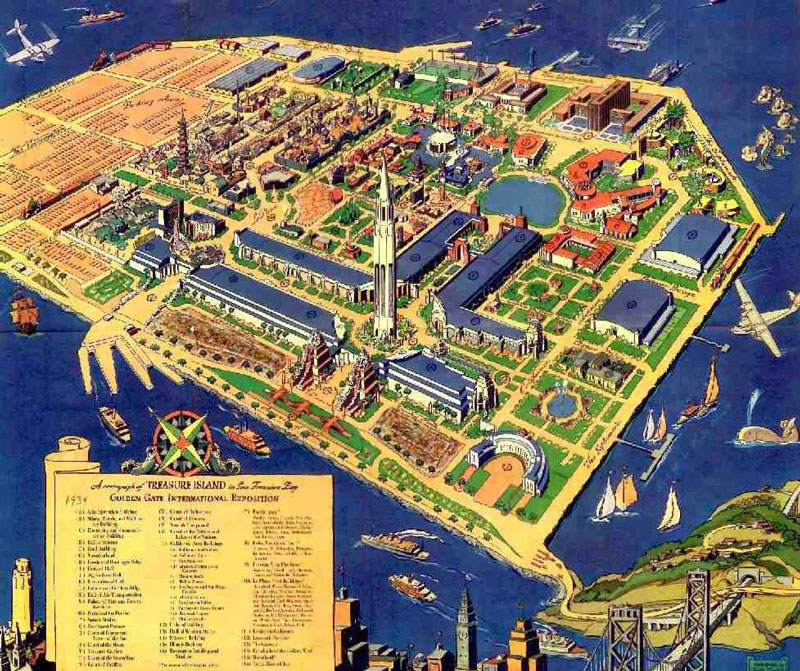
50 years ago
The modern version of the Master Mariners Regatta was revived in 1965. In its original form in the 1800s, the competition was between working ships and all monies raised went to disabled mariners and the families of sailors lost at sea. In the ‘new’ form, it’s a competition between vintage sailboats that were designed and built before World War II, or built using pre-war methods and designs. The regatta, held on the Saturday of Memorial Day weekend, is still one of the great spectacles of Bay sailing.
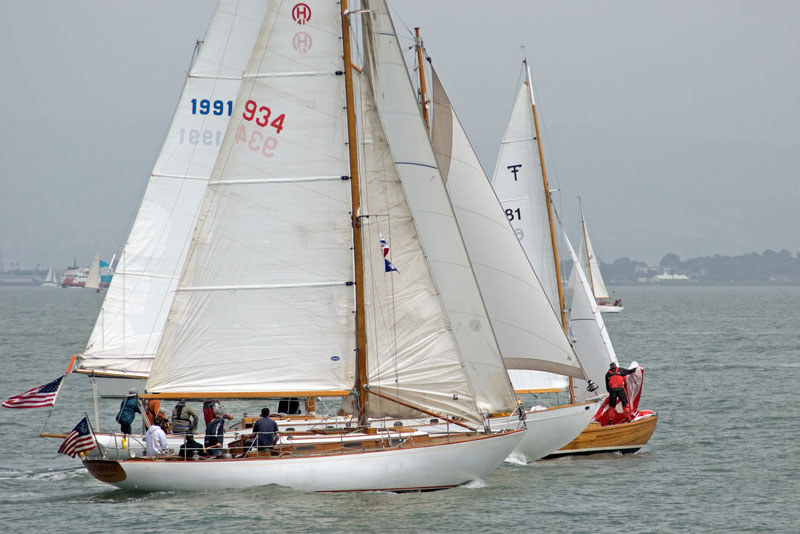
©Latitude 38 Media, LLC
135 years back to the future
Even when it was built, engineers knew Treasure Island would sink slowly back into the Bay. According to current sea-level rise models (and unless steps are taken to prevent it), Treasure Island will begin to submerge in the year 2150.
